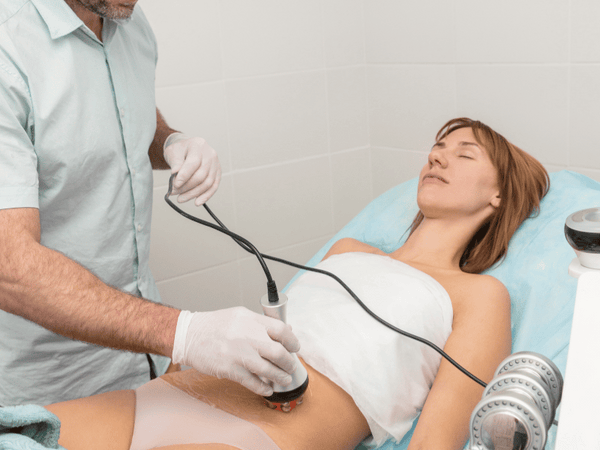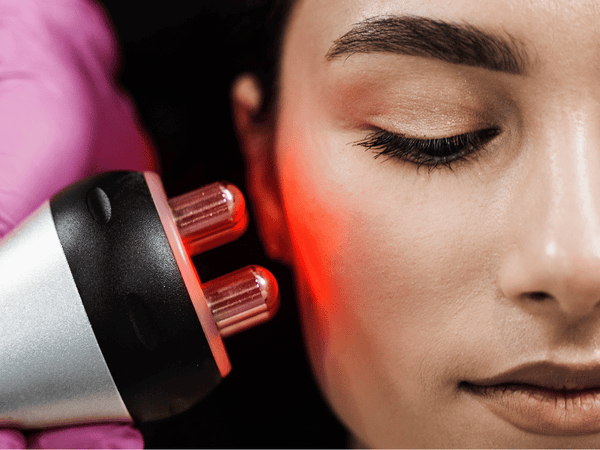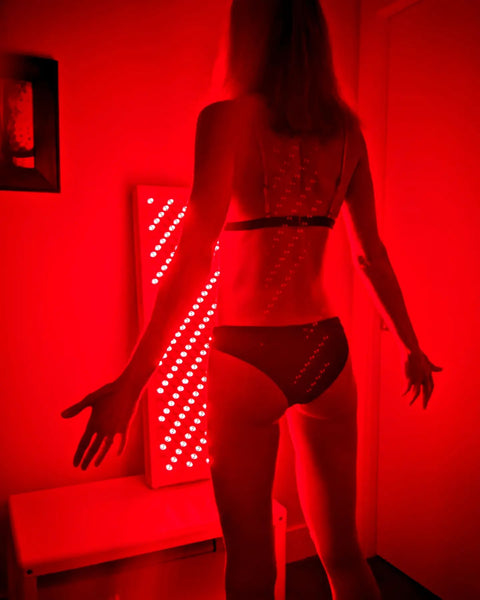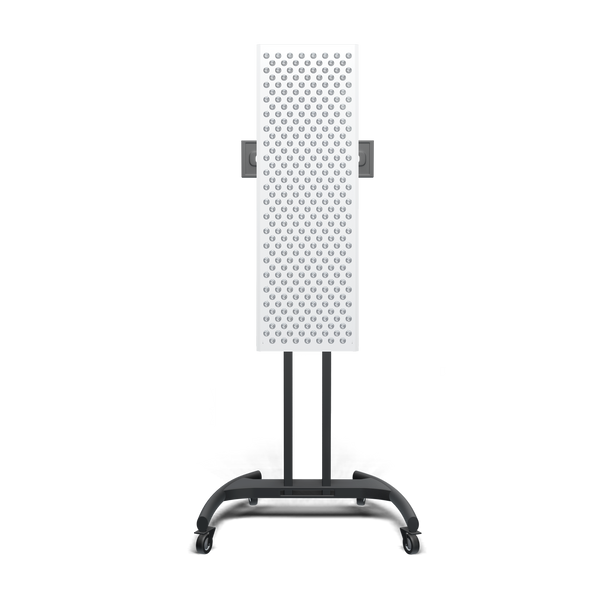
How Effective Is Radio Frequency Skin Tightening?
As we age, our skin undergoes various changes, leading to concerns such as wrinkles, sagging skin, and loss of elasticity. In the quest for youthful, radiant skin, many turn to innovative cosmetic treatments. One such treatment that has gained popularity in recent years is radio frequency (RF) skin tightening. This non-invasive procedure promises to rejuvenate the skin by stimulating and increasing collagen production, resulting in firmer, smoother skin.
But what exactly is radiofrequency skin tightening, and how does it compare to other skin rejuvenation methods? Moreover, with the rise of alternative therapies like Red Light Therapy, how does RF skin tightening hold up as a solution for skin tightening? In this comprehensive guide, we'll delve into the world of radio frequency skin tightening, exploring its benefits, procedure, potential side effects, and how it stands against other treatments like red light therapy.
Understanding Radio Frequency Skin Tightening
What is radio frequency skin tightening?

-
Definition and Basic Explanation: Radiofrequency skin tightening is a non-invasive cosmetic procedure that uses radio frequency (RF) energy to heat the deeper layers of the skin. This heat stimulates the production of collagen and elastin, two key proteins that provide structure and elasticity to the skin. As a result, the skin becomes firmer, smoother, and more youthful-looking.
-
How It Differs from Other Skin Tightening Methods: Unlike other skin tightening methods such as laser therapy or ultrasound, radio frequency skin tightening specifically targets the deeper layers of the loose skin without damaging the surface. This makes it a safer and more comfortable option for many people. Additionally, RF technology is suitable for all skin types and tones, whereas some other methods may not be as versatile.
How Does Radio Frequency Skin Tightening Work?

-
Scientific Explanation of the Process: When the RF energy is applied to the skin, it creates a controlled heat that reaches the dermis, the skin's deeper layer. This heat causes the existing collagen fibers to contract and tighten, which provides an immediate lifting effect. At the same time, the heat stimulates the body's natural healing response, leading to the production of collagen and elastin fibers over time. This process of neocollagenesis and elastogenesis helps to further improve the skin's firmness and texture.
-
The Role of Collagen and Elastin: Collagen is the most abundant protein in the skin, providing structure and support. Elastin, on the other hand, gives the skin its elasticity, allowing it to stretch and bounce back. As we age, the production of both collagen and elastin decreases, leading to wrinkles, sagging, and a loss of firmness. By promoting the production of these proteins, radiofrequency skin tightening helps to reverse these signs of aging and maintain a more youthful appearance.
The Benefits of Radio Frequency Skin Tightening
Radiofrequency skin tightening offers a range of benefits for individuals seeking a non-invasive solution to improve their skin's appearance. Here are some of the key advantages that radiofrequency treatments have:
Immediate and long-term benefits:

-
Instant Tightening: One of the immediate benefits of radio frequency skin tightening is to firm sagging skin. noticeable lifting and firming effect right after the treatment. This is due to the contraction of collagen fibers caused by the heat.
-
Progressive Improvement: Over time, the continued production of new collagen and elastin leads to further enhancements in skin texture and firmness. These improvements can become more visible in the weeks and months following the treatment.
Suitability for Different Skin Types:

-
Versatility: Radiofrequency skin tightening is suitable for all skin types and tones. Unlike some other treatments that may cause hyperpigmentation in darker skin, RF technology is safe and effective for everyone.
-
Customizable: The treatment parameters can be adjusted to accommodate different skin conditions and treatment goals, making it a versatile option for various concerns.
Comparative Advantages Over Other Treatments:

-
Non-Invasive: Unlike surgical options such as facelifts, radio frequency skin tightening is non-invasive, meaning there are no incisions, stitches, or scars.
-
Minimal Downtime: Most people can resume their normal activities immediately after the treatment, making it a convenient option for those with busy schedules.
-
Safety: The risk of side effects and complications is significantly lower compared to invasive procedures. The treatment is generally well-tolerated, with minimal discomfort.
Additional Benefits:

-
Skin Rejuvenation: Apart from tightening, RF treatment can also improve skin texture, reduce fine lines and wrinkles, and enhance overall skin tone.
-
Long-lasting Results: With a proper skincare routine and maintenance treatments, the results of radio frequency skin tightening can last for several years.
The Radio Frequency Skin Tightening Procedure
The radio frequency skin tightening procedure is a non-invasive treatment that requires minimal preparation and offers a relatively comfortable experience. Here's what you can expect:
Preparation and Expectations:

-
Consultation: Prior to the treatment, you'll have a consultation with a qualified practitioner to discuss your goals, assess your skin, and determine if radiofrequency skin tightening is suitable for you.
-
Pre-treatment Care: You may be advised to avoid certain medications or skincare products that could increase sensitivity or interfere with the treatment. Hydrating well and maintaining a healthy skincare routine can also enhance the results.
The Treatment Process:

1. Cleansing: The area is thoroughly cleaned to remove any makeup, oils, or impurities.
2. Gel Application: A conductive gel is applied to the front skin's surface to facilitate the movement of the radio frequency device and ensure even heat distribution.
3. Treatment: The practitioner will move the radio frequency device over the targeted area in a circular motion. You'll feel a warm sensation and tighten the skin as the energy penetrates the skin, stimulating more collagen production.
4. Duration: Each session typically lasts between 30 and 60 minutes, depending on the size of the area.
Post-Treatment Care and Recovery:
-
Immediate Aftercare: Your skin may appear slightly red or feel warm to the touch, but this usually subsides within a few hours. Applying a cool compress can help alleviate any discomfort.
-
Skin Care: It's important to keep the skin hydrated and protected from the sun. Use gentle, non-irritating products and apply a broad-spectrum sunscreen daily.
Follow-Up Sessions: Depending on your treatment plan, you may require multiple sessions spaced a few weeks apart to achieve optimal results.
Common Side Effects:

-
Redness and Warmth: It's normal to experience some redness and warmth in the treated area immediately after the session. This usually subsides within a few hours.
-
Swelling: Mild swelling may occur, but it typically resolves within a day or two.
-
Tingling or Numbness: Some individuals may feel a temporary tingling sensation or slight numbness, which should dissipate shortly after the treatment.
Risks and How to Mitigate Them:
-
Burns or Blisters: Although rare, improper use of the RF device can lead to burns or blisters. It's crucial to choose a qualified and experienced practitioner to minimize this risk.
-
Changes in Skin Pigmentation: In very rare cases, there may be changes in skin pigmentation, such as hyperpigmentation or hypopigmentation. Discussing your skin type and any previous reactions with your practitioner can help assess your risk.
Who Should Avoid Radio Frequency Skin Tightening?
-
Pregnant Women: The safety of RF treatments during pregnancy has not been established, so it's best to avoid them if you are pregnant.
-
Individuals with Certain Medical Conditions: If you have a history of keloid scarring, active skin infections, or certain medical conditions such as pacemakers or metal implants in the treatment area, you should consult with a healthcare professional before considering RF skin tightening.
-
Those with Recent Sunburns: It's advisable to wait until any sunburns have healed before undergoing the treatment to avoid further irritation.
Comparing Radio Frequency Skin Tightening to Other Skin Tightening Treatments
Radio frequency skin tightening is just one of several options available for those looking to improve the appearance of their skin. Understanding the differences between these heat skin treatments and methods can help you make an informed decision about which treatment is right for you.
Radio Frequency vs. Ultrasound Skin Tightening:
-
Technology: Radio frequency uses electromagnetic waves to heat the deeper layers of the skin, while ultrasound skin tightening uses sound waves to target the same area.
-
Depth of Penetration: Ultrasound can reach deeper into the skin compared to radio frequency, which may make it more effective for treating deeper layers of skin tissue.
-
Treatment Time: Ultrasound treatments can be longer than radio frequency sessions due to the need for more precise application.
-
Comfort: Both treatments are generally well-tolerated, but some individuals may find radio frequency to be more comfortable due to its gradual heating process.
Radio Frequency vs. Laser Skin Tightening:
-
Technology: laser skin tightening uses focused light energy to heat the collagen in the skin, while radio frequency uses electromagnetic energy.
-
Precision: Lasers can be more precise in targeting specific areas of the skin, making them suitable for treating smaller, more defined areas.
-
Skin Type Suitability: Radio frequency is safe for all skin types and tones, whereas certain lasers may not be suitable for darker skin tones due to the risk of hyperpigmentation.
Red Light Therapy as an Alternative:
-
Technology: Red light therapy uses low-level wavelengths of red light to stimulate cellular activity and promote collagen production.
-
Non-Invasive: Like radio frequency, red light therapy is non-invasive and does not require any downtime.
-
Versatility: Red light therapy can be used for a variety of skin concerns, including skin tightening, reducing inflammation, and improving skin texture.
-
Safety: Red light therapy is considered safe for all skin types and has minimal side effects.
Pros and Cons of Each Option:
Radio Frequency:
-
Pros: suitable for all skin types; non-invasive; minimal downtime.
-
Cons: May require multiple sessions for optimal results; less effective for deeper tissue tightening.
Ultrasound:
-
Pros: Can target deeper layers of skin; long-lasting results.
-
Cons: Longer treatment time may be less comfortable.
Laser:
-
Pros: precise targeting, effective for surface-level tightening.
-
Cons: The risk of hyperpigmentation in darker skin tones may require downtime.
Red Light Therapy:
-
Pros: non-invasive, safe for all skin types, multiple skin benefits.
-
Cons: May require consistent use over time for best results; less targeted than other methods.
Disclaimer: Each skin tightening treatment has its own unique advantages and limitations. Your choice will depend on your specific skin problems, concerns, goals, and preferences. Consulting with a skincare professional can help you determine which method is best suited to your needs.
KOZE X Series (White)
The KOZE X Series is our premier red and near-infrared light therapy panel, designed for maximum efficiency and potency. It's tailor-made to deliver superior results swiftly, making it ideal for enhancing full-body performance, accelerating workout recovery time, promoting skin health, and boosting overall wellness. Optimize your experience by selecting either a vertical or horizontal stand for your panel. A team member will contact you to confirm your stand selection. Please note that the stand is available in black.
Key Features:
-
1500 watts of power
-
Equipped with 300 Dual-Chip LEDs
-
Flicker-Free technology
-
EMF-Free at a distance of 4 inches or more
Experience the benefits of advanced light therapy, including skin tightening and facial rejuvenation, with the KOZE X Series.
Frequently Asked Questions
When considering radio frequency skin tightening, many people have questions about the treatment. Here are some of the most frequently asked questions to help you understand the process better:
Is radio frequency skin tightening painful?
Most individuals experience minimal discomfort during the treatment. You may feel a warm sensation as the device heats the skin, but this is generally well-tolerated. If you have any concerns about pain, discuss them with your practitioner, who can adjust the settings for your comfort.
How Many Sessions Are Required for Optimal Results?
The number of sessions needed varies depending on your individual skin condition and desired outcomes. Typically, a series of 3–6 treatments, spaced a few weeks apart, is recommended for desired results. Your practitioner will provide a personalized treatment plan during your consultation.
Can radio frequency skin tightening be combined with other treatments?
Yes, radio frequency skin tightening can be combined with other treatments for enhanced results and tighter skin. For example, it can be paired with microdermabrasion, chemical peels, or other non-invasive procedures to improve skin texture and even skin tone. Always consult with a professional to determine the best combination of treatments for your skin.
How long do the results last?
The longevity of the results varies depending on factors such as age, lifestyle, and skin care regimen. Typically, the effects of radiofrequency skin tightening can last for up to 2 years. Maintaining a healthy lifestyle and following a proper skincare routine can help prolong the results. Periodic maintenance treatments are also recommended to keep the skin firm and youthful.
Is there any downtime after the treatment?
One of the advantages of radiofrequency skin tightening is the minimal downtime. Most people can resume their normal activities immediately after the treatment. However, it's important to follow any post-treatment care instructions provided by your practitioner to ensure the best possible outcome from your RF skin tightening treatments.
Who Is a Good Candidate for Radio Frequency Skin Tightening?
Good candidates for radio frequency skin tightening are individuals with mild to moderate skin laxity who are looking for a non-surgical solution using radio frequency skin treatments to improve skin firmness and reduce the appearance of wrinkles. It's suitable for all skin types and tones older skin too. If you have severe skin laxity, a surgical option may be more appropriate.
Conclusion
Radiofrequency skin tightening is a remarkable technology that offers a non-invasive solution to common serious skin problems and concerns, such as facial wrinkles such as laxity, wrinkles, and fine lines. Its ability to stimulate collagen production and tighten the skin without the need for surgery or significant downtime makes it an attractive option for those seeking a more youthful appearance.
By understanding radio frequency treatments, the benefits, procedure, potential side effects, and how they compare to other treatments, you can make an informed decision about whether radio frequency skin tightening is right for you. Whether you're looking to complement your anti-aging routine or seeking an alternative to more invasive surgical procedures, this treatment offers a promising path to achieving firmer, smoother skin.
Call to Action
Are you ready to experience the rejuvenating effects of radio frequency skin tightening? Contact Koze Health today to schedule your personalized consultation. Our team of experts is dedicated to helping you achieve your skin goals with the latest technologies and customized treatment plans. Take the first step towards a more youthful, radiant you by reaching out to us now.
References
1. "Radiofrequency in Cosmetic Dermatology: A Review" - Dermatologic Surgery Journal: https://journals.lww.com/dermatologicsurgery/Abstract/2015/11000/Radiofrequency_in_Cosmetic_Dermatology__A_Review.1.aspx
2. "Safety and Effectiveness of Non-Invasive Radiofrequency for the Treatment of Skin Laxity"—Journal of Clinical and Aesthetic Dermatology: https://www.ncbi.nlm.nih.gov/pmc/articles/PMC4631236/
3. "A Comparative Study of Radiofrequency and Microneedling in Skin Rejuvenation"—Aesthetic S Surgery Journal: https://academic.oup.com/asj/article/38/8/903/4969620
4. "Red Light Therapy: A Review of Its Effects on Skin and Health" (Journal of Photochemistry and Photobiology): https://www.sciencedirect.com/science/article/pii/S1011134420303987
5. "Nonablative Radiofrequency for Skin Rejuvenation"—Lasers i in Medical Science Journal: https://link.springer.com/article/10.1007/s10103-013-1440-1

